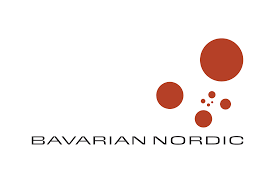Denmark’s booming market for solar panels is likely to cool off after the climate minister, Martin Lidegaard (Radikale), introduced legislation today that will make it less attractive for homeowners to produce solar energy.
Spurred on by a lucrative repayment scheme, homeowners had flocked to install new solar panels at a rate of 36 additional megawatts a month since 2010. The breakneck pace of installation had resulted in a total solar energy production capacity of 250MW, well above the 2020 target of 200MW.
The rapid increase in solar energy capacity was mostly due to investments by private households and has helped increase the share of Danish electricity produced by renewable sources toward the 35 percent target set for 2020 and the 100 percent target for 2050.
That pace is likely to slacken, however, if Lidegaard's legislation passes as expected. Under the current rules, homeowners are paid to produce their own solar energy and can purchase surplus energy back at any time during the year at the same price as they were paid to produce it.
However, under the new rules they would pay more when purchasing their energy back. Instead of being able to park the electricity they generate on the power grid for later use, it must be used immediately to have full value, about 2.20 kroner per kilowatt-hour (kWh). Excess power will be purchased at a price of 1.30 kroner per kWh starting in 2013. In 2023, the amount will be reduced to 0.60 kroner per kWh.
Additionally, energy surpluses would be calculated on a daily basis, rather than on an annual basis, meaning that homeowners will not be able to overproduce during summer months and receive that energy back at below-market rates during the winter.
The new rules will not be retroactive, as was originally planned, and will only apply to electricity produced using solar panels purchased after today. Previously installed panels will still fall under the former regulations. To come under the umbrella of the old plan, the purchased solar panels must be announced to the local electricity network supplier before December 20 while the panels must be mounted and ready to use by 20 May 2013.
The beneficial scheme and the falling price of the panels themselves has seen the number of Danes with solar panels installed nationwide explode from 3,000 in 2011 to nearly 30,000 now in 2012. After recognising that the deal was costing the state money, the government managed to assemble a majority in parliament to change the payment agreement.
“When the panels are so cheap, the subsidy should also become cheaper, so taxpayers and all those people who don’t have solar panels won’t have to pay more than necessary,” Lidegaard told Berlingske newspaper.
Dansk Solcelleforening, which represents the solar power industry, found the news unsettling and predicted that the new daily calculation will drastically diminish the number of solar panels being sold to homeowners. But more large-scale panel setups installed by businesses, housing associations or other groups can all look forward to receiving additional subsidies until 2020. A removal of the 6kW limit on maximum generation capacity is also likely to promote larger solar power farms.
The expected changes drove sales of solar panels even higher in recent weeks, with many companies reporting orders well over double their norm over the past few days. It is now expected that Denmark will have 250MW of solar energy when all currently purchased panels are installed and functional, leading Lidegaard to raise Denmark's 2020 goals to 700MW of solar energy.
But, according to Eco Consult owner and energy researcher at Aalborg University, Klaus Illum, solar energy is bad business for Denmark, which should instead focus on wind energy.
”Sun cells are a hindrance to the energy policies to reduce carbon dioxide emissions. You can compare it to some work needing done and having six strong men at your disposal. Then six weak men come along and are assigned the work instead,” Illum told the science publication Ingeniøren.
Yet, if the sales of solar panels continue with the same vigour as today, Danish households will have produced enough energy to save 203 million kroner off the national electricity bill by the end of this year. And because solar energy doesn’t release any form of greenhouse gas, it would also help decrease Denmark’s total greenhouse gas emissions levels, which have dropped 11 percent from 1990 to 2010.














